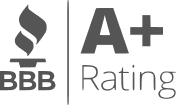The Quiet Revolution Reshaping Charitable Giving
In recent years, one of the most powerful forces shaping philanthropy hasn’t come from a new fundraising platform or viral campaign: it’s come from an investment account. Donor-Advised Funds (DAFs), once the domain of the ultra-wealthy, are now a mainstream tool for charitable gifts. For nonprofits, understanding and integrating a donor-advised fund strategy is no longer optional, it’s essential.
According to the National Philanthropic Trust’s 2024 DAF Report, assets in donor-advised funds have surpassed $230 billion in the United States, with annual grantmaking exceeding $50 billion. These numbers represent a 30% increase in just five years, signaling a major shift in how Americans prefer to give. For nonprofits that fail to adapt, this change could mean missing out on the next generation of major donors.
Summary
What Exactly Is a Donor-Advised Fund?
A donor-advised fund functions like a charitable investment account. Donors contribute cash, stock, or other assets to a sponsoring organization—often a financial institution or community foundation—and immediately receive a tax deduction. The funds can then be invested and grow tax-free until the donor recommends grants to their chosen nonprofits.
In essence, a Donor-Advised Fund separates the act of giving from the act of granting. A donor can make a large contribution in one tax year but distribute grants over time. Organizations like Fidelity Charitable, Schwab Charitable, and Vanguard Charitable have made this model widely accessible, lowering the barrier for donors who want both flexibility and impact.
For nonprofits, however, the challenge lies in visibility. When a donor contributes through a DAF, the nonprofit may receive the funds from a third party, often without the donor’s contact information. Without a proper DAF strategy, many organizations fail to build relationships with these donors—missing opportunities for long-term engagement.
Why DAFs Matter More Than Ever
Donor-Advised Funds are not a passing trend; they’re the future of philanthropy. As Justin Wheeler, CEO of Funraise, explains in his conversation on the Nonprofit MBA Podcast, “Donor-advised funds are changing the psychology of giving. The
people who use them are often the most strategic donors—they think long-term and expect nonprofits to do the same.”
The modern donor is increasingly data-driven and values transparency. They want to see how their funds are managed, what outcomes they create, and how efficiently organizations operate. DAFs appeal to these donors because they combine financial stewardship with philanthropic control—a powerful combination that aligns perfectly with modern giving behavior.
Moreover, the rise of Donor-Advised Funds corresponds with generational change. Research from Bank of America’s 2023 Study of Philanthropy found that 85% of millennial and Gen X high-net-worth households prefer giving vehicles that offer more control and measurable impact—exactly what DAFs provide. Nonprofits that position themselves to attract DAF grants will stay relevant as donor demographics evolve.
Building a Donor-Advised Fund Strategy
Developing a donor-advised fund strategy doesn’t require financial wizardry, but it does demand intention. Here’s where to start:
- Educate Your Team
Many nonprofit staff and board members still misunderstand how DAFs work. Some assume they’re reserved for wealthy families or foundations. In reality, over 50% of DAF accounts in the U.S. hold balances under $50,000, according to the National Philanthropic Trust. Start by hosting an internal training session or inviting an expert speaker to demystify DAFs. The Council on Foundations offers excellent educational resources.
- Identify DAF Donors
Because DAF donations often come from sponsoring institutions like Fidelity Charitable or community foundations, they can be hard to trace. However, nonprofits can use donor management software to flag DAF contributions. Encourage donors to include their contact information in grant recommendations and provide a dedicated DAF giving page on your website. A tool like DAF Direct allows donors to initiate a DAF gift directly from your site.
- Promote DAF Giving Options
Visibility drives action. Just as you would advertise corporate matching gifts or stock donations, promote your DAF giving options in newsletters, donation pages, and campaign materials. Include clear messaging such as “Support our mission through your Donor-Advised Fund—learn more at [yourwebsite.org/DAF].”
- Stewardship and Relationship Building
Once a DAF gift is received, follow up immediately—even if the donor’s identity isn’t provided. Thank the sponsoring institution and request permission to thank the donor personally. Consistent communication builds trust and opens the door to recurring gifts.
The Misconception About “Dormant” DAFs
One common criticism is that DAFs hoard funds instead of distributing them to active charities. While it’s true that DAFs lack minimum payout requirements, data paints a more nuanced picture. In 2023, DAFs had an aggregate payout rate of 23.4%, according to the National Philanthropic Trust—far higher than the 5% minimum required of private foundations.
That said, nonprofits can play a role in encouraging DAF activation. By educating donors about the tangible impact of their contributions and making it easier to give, organizations can turn dormant funds into dynamic philanthropy.
Integrating DAFs Into Broader Fundraising
A successful DAF strategy doesn’t stand alone—it complements your broader fundraising ecosystem. Consider how DAFs can fit into these key areas:
- Major Gifts: Many DAF donors are also major gift prospects. Treat DAF gifts as the start of a deeper relationship, not a one-time transaction.
- Planned Giving: Encourage donors to name your nonprofit as a successor beneficiary of their DAF, ensuring legacy support.
- Corporate Partnerships: Some companies sponsor DAF programs for employees. Partnering with them can open new channels for giving.
- Campaign Planning: When launching capital or endowment campaigns, create messaging tailored to DAF donors, emphasizing flexibility and tax efficiency.
Case Study: How a DAF Strategy Transformed Giving
When a mid-sized youth services nonprofit in Chicago launched a donor-advised fund outreach campaign, the results were transformative. By adding a simple DAF donation button on its website and sending quarterly updates to financial advisors, the organization saw DAF contributions rise by 48% in one year. More importantly, these gifts came from donors who continued giving annually, often at higher levels.
This kind of strategic alignment between donor convenience and organizational readiness is what sets thriving nonprofits apart from stagnant ones.
Leveraging Technology for DAF Success
In today’s fundraising landscape, technology is indispensable. Platforms like Funraise, Bloomerang, and Neon One now integrate with DAF tracking tools, helping nonprofits identify, acknowledge, and retain DAF donors seamlessly.
Justin Wheeler emphasizes that “technology levels the playing field. Smaller nonprofits can now access the same insights and automation once reserved for large institutions.”
Investing in donor analytics, CRM integrations, and customized giving portals allows nonprofits to keep pace with donor expectations—and to compete in a more sophisticated fundraising environment.
The Future of Nonprofit Fundraising
The growth of Donor-Advised Funds represents both an opportunity and a challenge. On one hand, they unlock billions in potential grants; on the other, they require nonprofits to rethink engagement and transparency.
The nonprofits that thrive in this new era will be those that blend financial literacy with storytelling—that can speak the language of both investment and impact. Developing a DAF strategy is not about chasing trends; it’s about positioning your organization where the money already is.
For any nonprofit leader serious about long-term sustainability, the question isn’t whether to have a donor-advised fund strategy. It’s how soon you can start one.
Helpful Resources
- National Philanthropic Trust Annual DAF Report
- Fidelity Charitable Learning Center
- Council on Foundations DAF Resources
- IRS Guidance on Donor-Advised Funds
About the Experts
Justin Wheeler is the Co-founder and CEO of Funraise, a venture backed technology platform used by thousands of nonprofits around the world. In addition to Funraise, Justin has played a pivotal role in founding and scaling multiple nonprofit organizations to become multimillion-dollar entities, including Invisible Children and Liberty in North Korea.
Stephen Halasnik is a Managing Partner at Financing Solutions and host of The Nonprofit MBA Podcast. Financing Solutions has been the largest provider of lines of credit to small nonprofits in the US since 2012.




